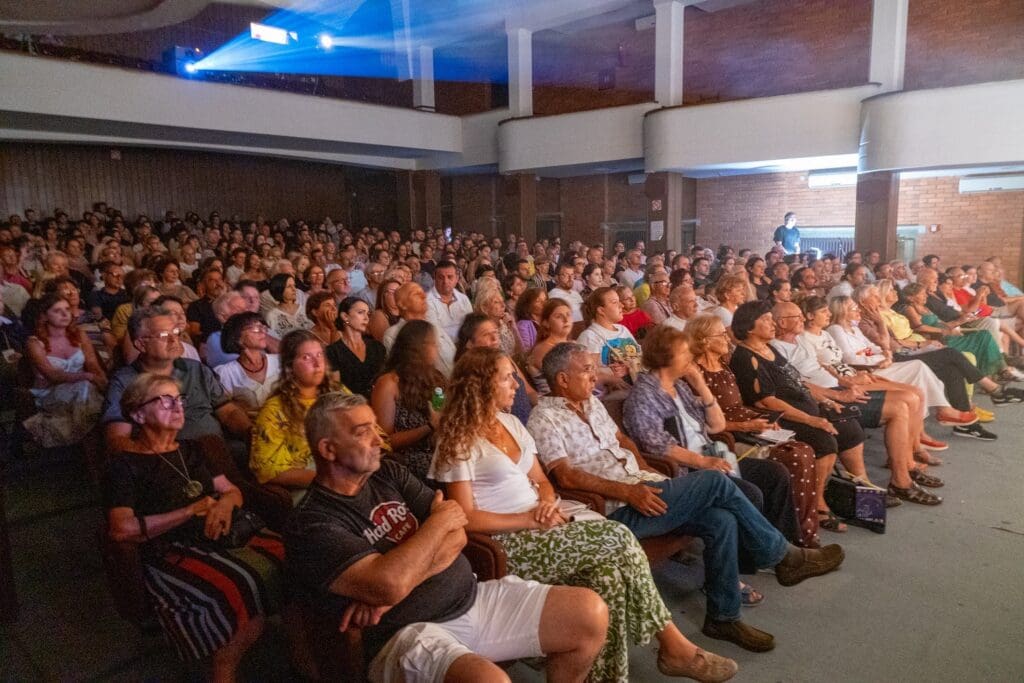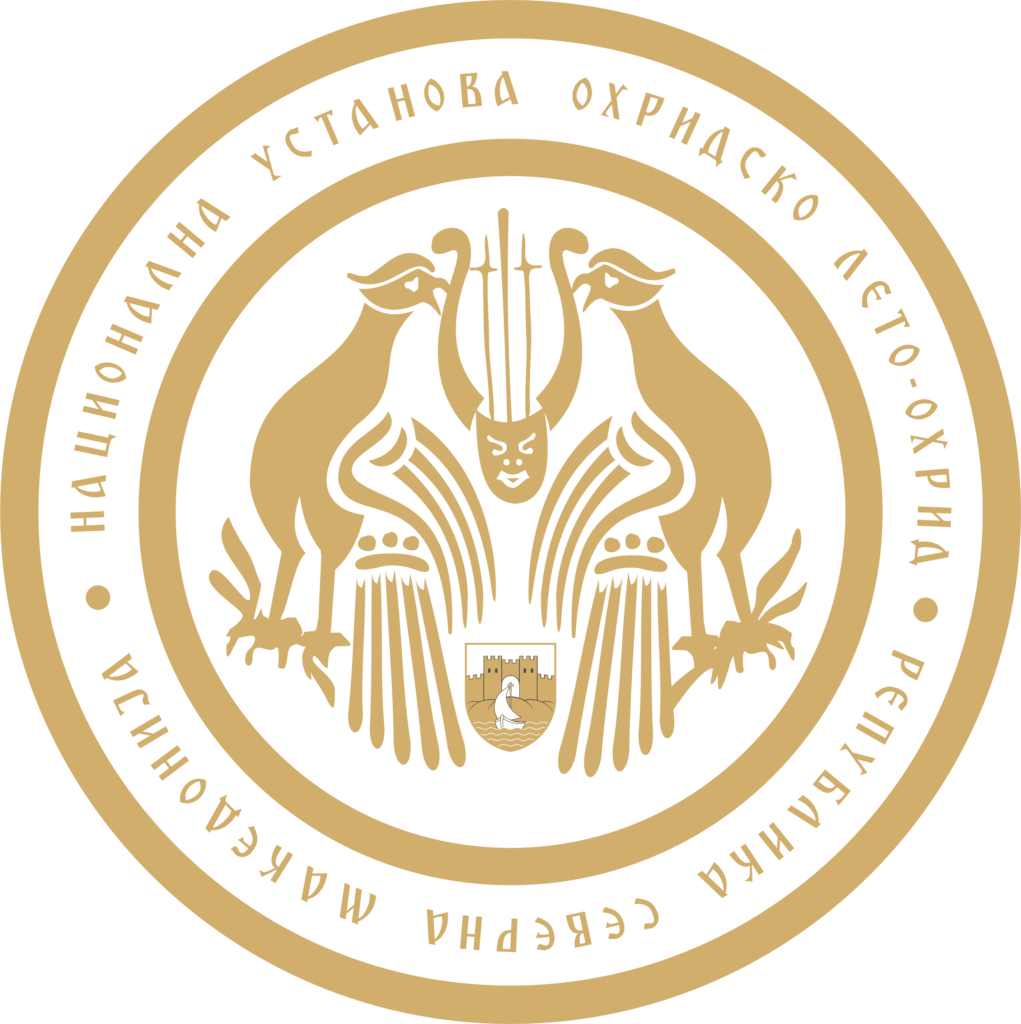The actors from the National Theatre Jordan Hadzi Konstantinov-Dzinot from Veles performed the premiere of the theatre play “Racin” last night under the direction of Dejan Projkovski. The play offered a new, fresh, and unconventional experience and portrayal of Koco Racin as both a person and an artist, emphasizing his human dimension and presenting facts that history has somewhat overlooked.
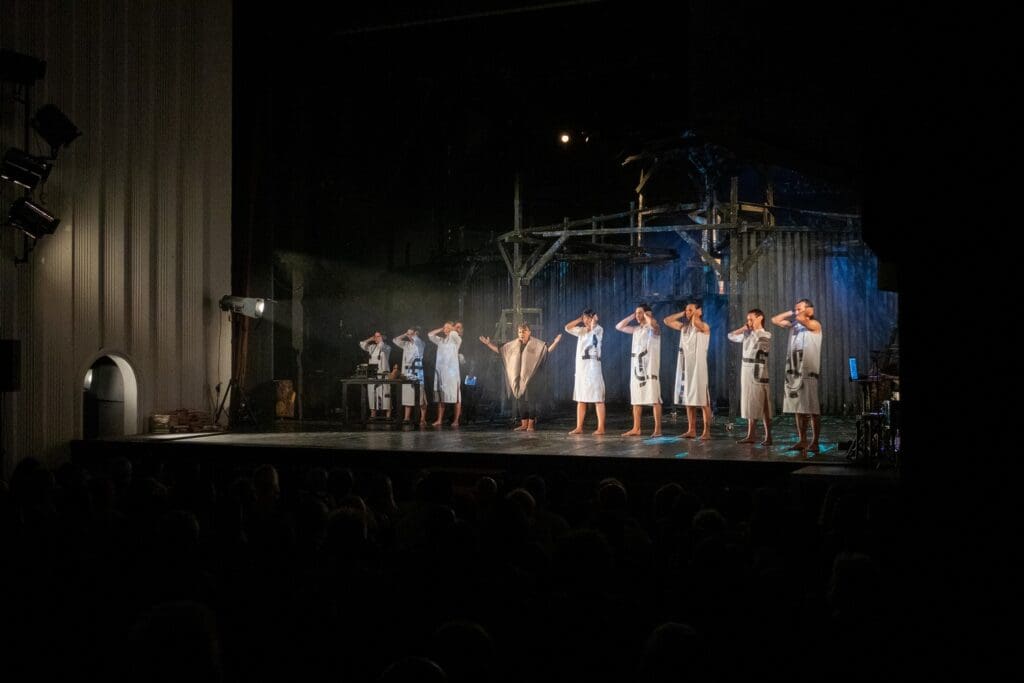
According to director Dejan Projkovski, Racin is already part of our mythology, a part of the DNA of each of us, and his emotion in this theatrical work is conveyed through contemporary means of expression.
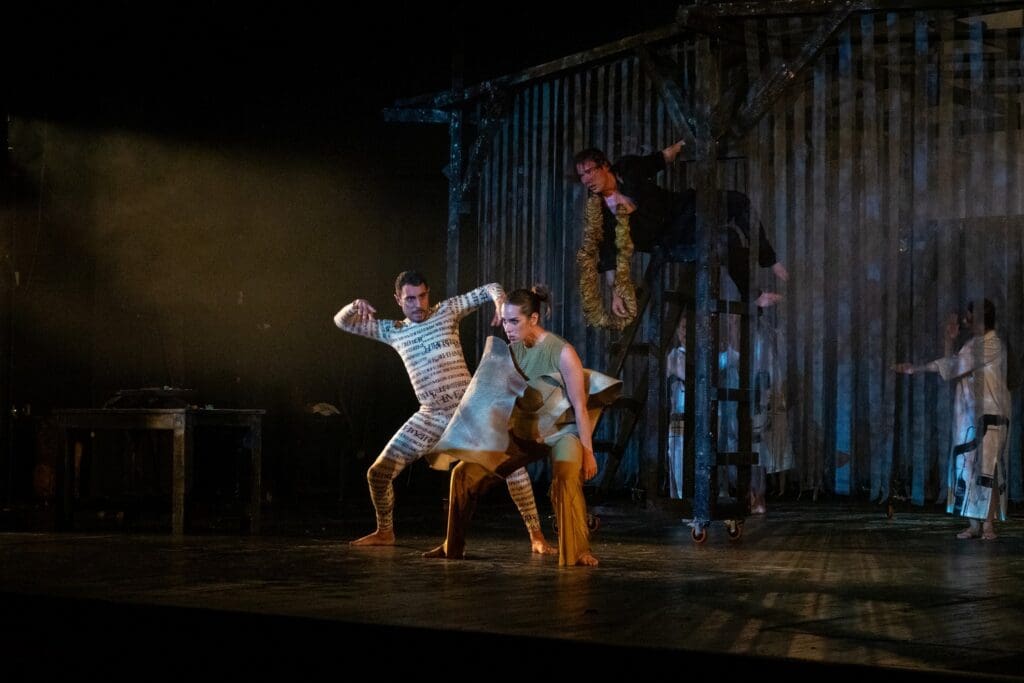
“For me, the play was like Diogenes searching for a man in broad daylight with a lantern. In this play, we embarked with a candle to seek the reflections of Racin within us, attempting to create a performance inspired by the character and work of Racin, translated into a contemporary stage language. The play does not aim to recount Racin’s life or answer historical labyrinths and contexts but is our reflection on what Racin represents today,” said Projkovski. He added that the entire process of creating the play was interesting and exciting.
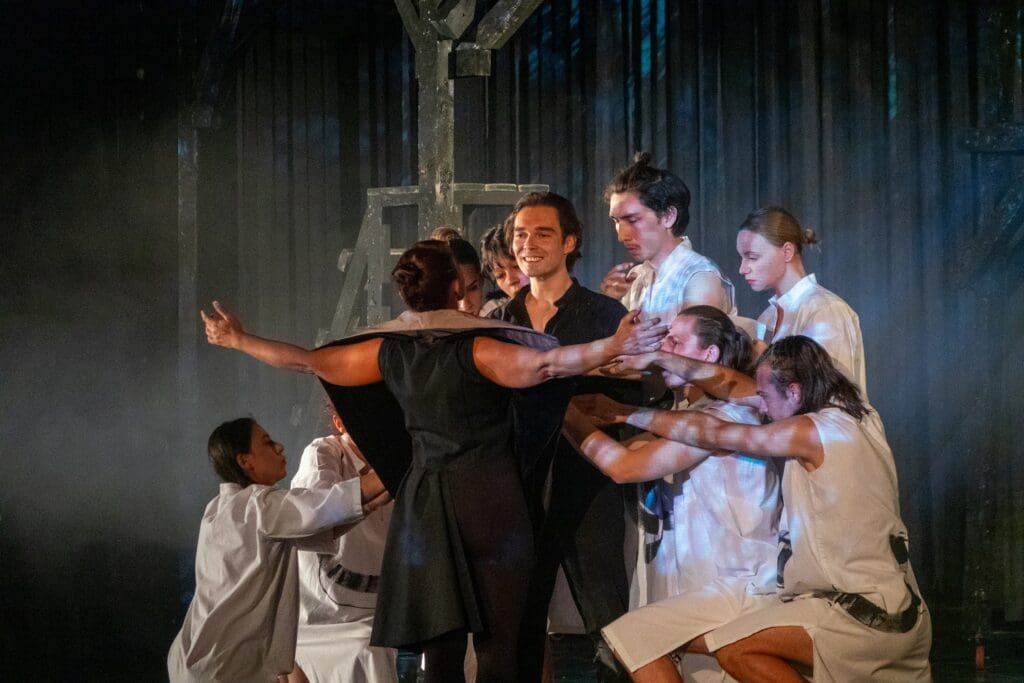
Sasho Dimoski, the director of the National Theatre “Jordan Hadzi Konstantinov-Dzinot” and the dramaturge of the play, described the process of creating the play as thrilling. He explained that they explored Racin from the other side of the verse, the other side of the word, and the other side of what is historically known to the public, translating it into an authentic stage language through theatrical means of expression.
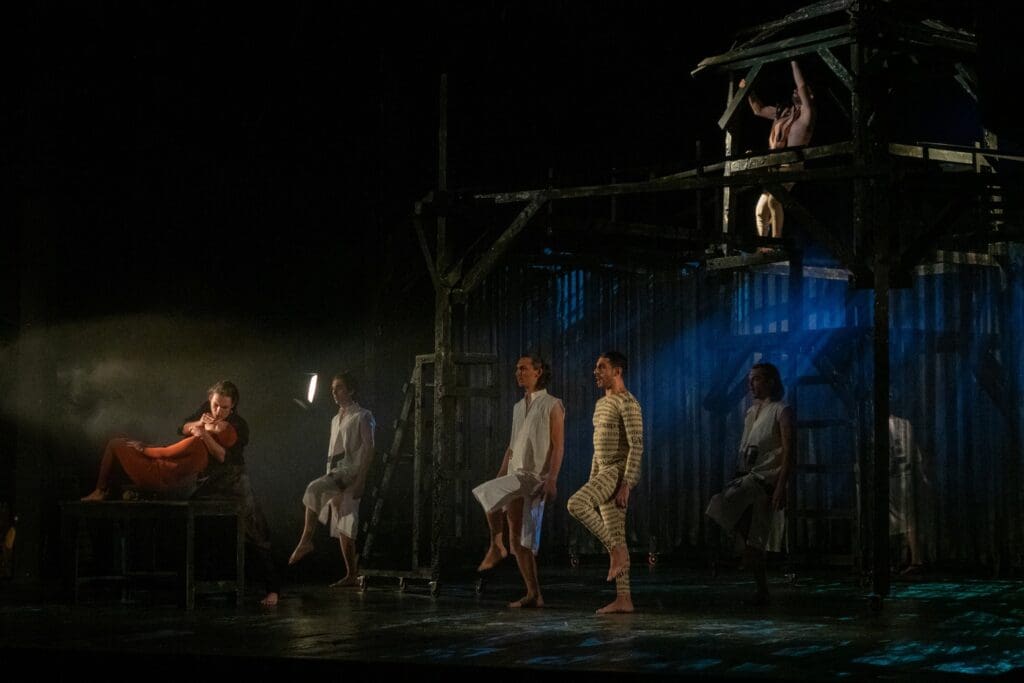
“The dramaturgy of the play is crafted based on Racin’s prose and poetry on one side, and on the other side, on the so-called metatextual records within Racin’s opus. I worked on discovering aspects of Racin that were previously unknown to us, and in this sense, I believe the play offered a new truth about everything we know about Racin. We cannot imagine the development of contemporary Macedonian poetry, prose, and art in general without talking about Racin. In this sense, this new discovery of Racin’s identity is also a return to the essentials for which we are here today,” explained dramaturge Dimoski.
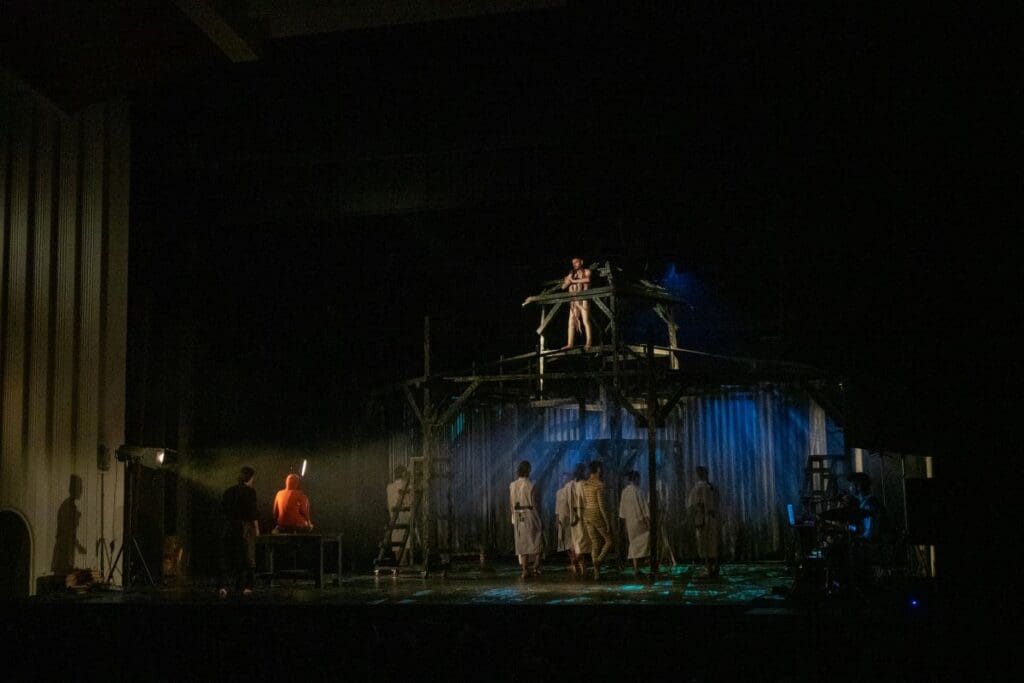
Before a full house at the “Grigor Prlicev” Cultural Center, the play was rich with incredible visual and musical sensations. Costumes were created by Rade Vasilev and Elena Vangelovska, scenography by Valentin Svetozarev, and live music was performed by Sashko Kostov and Orhideja Dukova.
